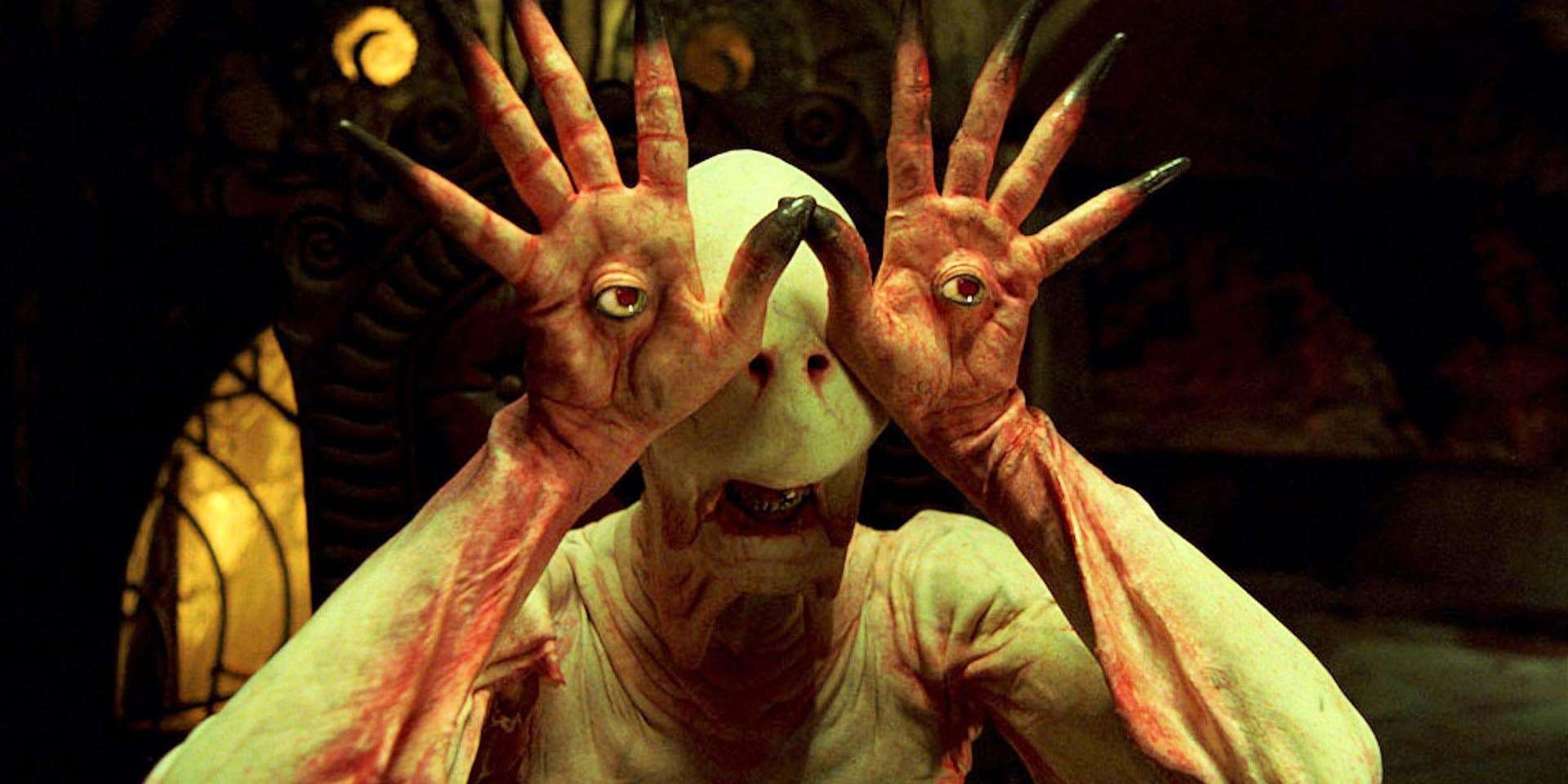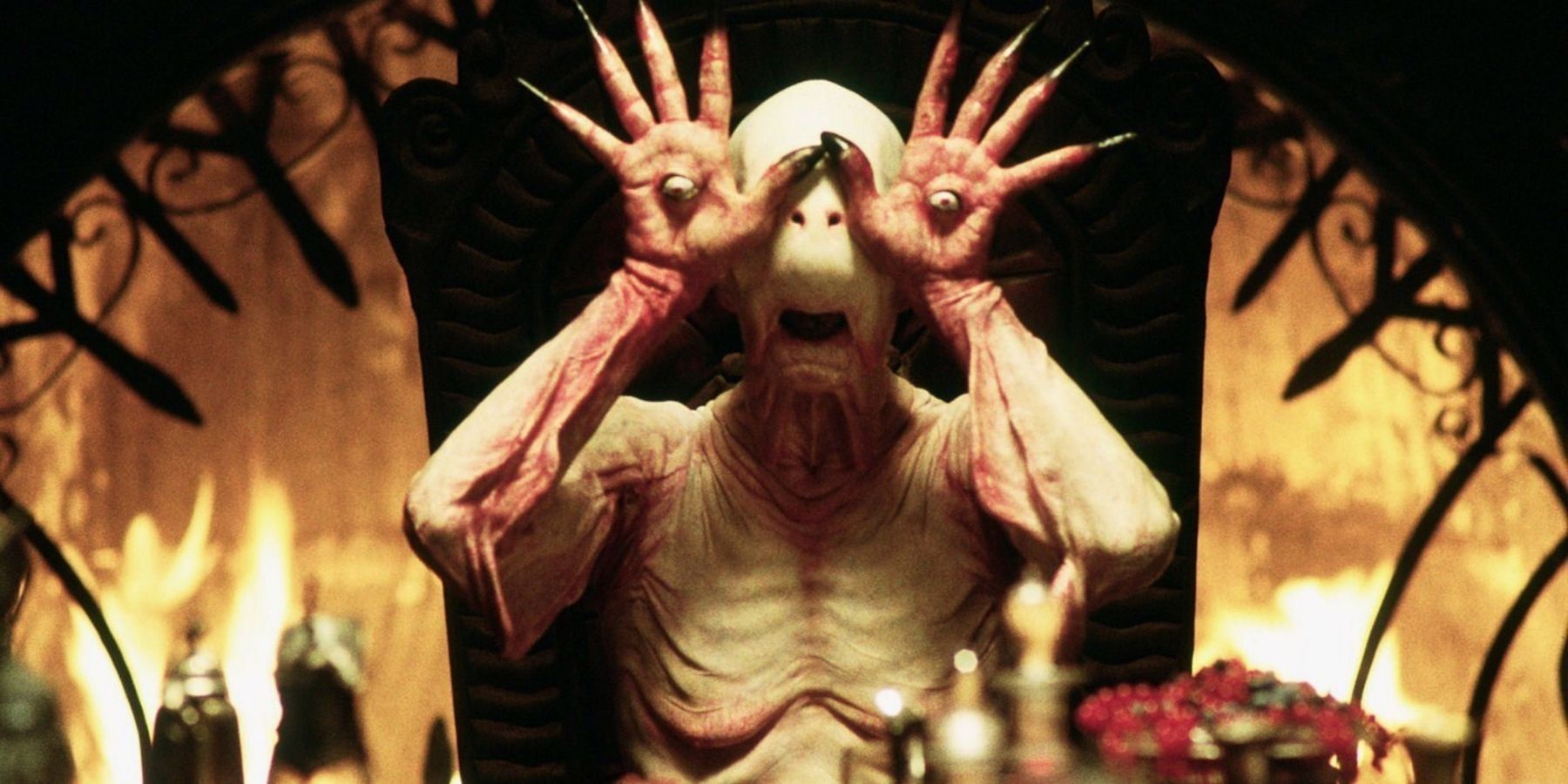Guillermo Del Toro is quite possibly one of the most acclaimed directors in the history of fantasy cinema. From the paranormal superhero flick Hellboy, to the giant robot thrill ride Pacific Rim, to the Oscar-winning fishman romance The Shape of Water, Del Toro is a master of weaving larger-than-life stories that capture the imaginations of moviegoers everywhere.
However, there’s a case to be made that Del Toro’s greatest masterpiece doesn’t actually feature any real fantasy elements at all. The film in question is 2006’s Pan’s Labyrinth — and for those unfamiliar with the movie, that claim may seem ludicrous. After all, Pan’s Labyrinth is best known for its darkly fantastical characters like the enigmatic Faun and the sinister Pale Man. But upon closer examination, the movie may be much more grounded than it first appears.
Fantasy and Reality
The plot of Pan’s Labyrinth is a simple one, at least on the surface. In 1944, during the aftermath of the Spanish Civil War, a young girl named Ofelia is taken by her pregnant and ailing mother to live with her new stepfather, a strict and ruthless military man named Captain Vidal. As she struggles to adjust to her unpleasant new surroundings, Ofelia discovers an old abandoned labyrinth near Vidal’s estate, where she encounters a mysterious and ancient Faun. The Faun tells Ofelia that she is the reincarnation of Moanna, princess of the underworld, and that she must complete three trials in order to return to her true home. Ofelia is wary of the Faun, but she accepts his offer, hoping to trade her bleak and dreary life for a world of magic and wonder.
Pan’s Labyrinth clearly harkens back to past stories about children adventuring in fantasy worlds — the likes of Alice in Wonderland and The Lion, the Witch, and the Wardrobe. But despite the familiar premise, Del Toro is trying to tell a very different story. For starters, Pan’s Labyrinth is not a story meant for kids. It may seem that way at first, with its child protagonist and fairy tale trappings. However, over the course of the film, Ofelia’s adventures take a backseat to the real-world story unfolding around her. In fact, Vidal’s housekeeper Mercedes and her efforts to aid the anti-fascist revolution are just as prominent in the film as Ofelia’s side of the story.
Indeed, Pan’s Labyrinth is the rare fantasy adventure that spends most of its time dealing with real-world issues — centered on an actual historical setting, no less. In the end, the greatest threat Ofelia must overcome isn’t any of the otherworldly beings she encounters, but rather her own tyrannical stepfather. Unlike most narratives about children exploring fantasy worlds, the fantasy elements in Pan's Labyrinth exist to support the real-world story happening around them, not the other way around. In fact, it’s possible that the mythical creatures Ofelia meets on her journey aren’t even real at all.
A World of Delusion?
One of the central themes of Pan’s Labyrinth is delusion — specifically, the way people create imaginary narratives in their heads in order to deal with the problems in their life. For instance, Captain Vidal may scold Ofelia for her obsession with fairy tales, but he’s just as guilty of living in a dream world. He presents himself as a proud, prestigious war hero, but under the surface, he’s just a cowardly man obsessed with control. He convinces himself that the enemy is everywhere in order to justify his vile deeds, but in private, he’s filled with self-loathing over his actions.
Captain Vidal is hardly the only example. From soldiers to civilians, nearly everyone in the film is putting up some kind of facade, pretending everything is fine when it really isn’t. With that in mind, it’s easy to interpret Ofelia’s fantasy adventures as an elaborate coping mechanism to help her deal with the stress of her new life. After all, no one but her ever notices the Faun or his fairy companions, so it’s possible that it’s just all in her head.
In fact, most of the supernatural figures Ofelia meets seem to mirror her own real-life experiences. Del Toro has confirmed that the Pale Man is meant to represent institutional oppression, like that of the fascist regime in Spain. He sits at a vast banquet, hoarding food without eating a single bite, but he’ll kill and devour anyone who takes a single bite for themselves. Similarly, the Faun often comes off as a harsh, patriarchal figure who imposes his own rigid rules on Ofelia, not unlike Captain Vidal.
Eventually, the film concludes with Ofelia being shot by Captain Vidal while protecting her newborn brother. Bleeding out on the ground, she has a vision of the Faun reuniting her with her parents in the underworld. It’s possible to interpret this scene as Ofelia’s soul passing on to the underworld as her mortal body dies, but one could also read it as another hallucination to console her in her final moments. One interpretation is certainly more comforting than the other, but either way, she dies knowing she did the right thing.
Real After All?
Of course, it’s also possible to interpret all the fantastical elements as being completely real. Not only has Del Toro himself stated that this was his intention, there are a few hints that the curious occurrences around Ofelia are more than just imaginary. Most prominently, there’s a scene where Ofelia successfully outruns Vidal in the labyrinth by taking a magical shortcut. However, the supernatural parts of the story are left ambiguous enough that one could interpret it either way.
Ultimately, that very ambiguity is one of the many factors that makes Pan’s Labyrinth such an engaging, nuanced story. While most stories would leave a definitive answer as to whether the Faun and the underworld are real or not, Del Toro allows the audience to draw their own conclusions, encouraging a close reading of the film and its themes. In the end, it isn’t even all that important whether the fantasy is truth or fiction — the story is just as compelling either way. Even so, the fact that the ambiguity is there to begin with is a testament to Guillermo Del Toro’s ingenuity as a filmmaker and his willingness to experiment with familiar tropes. No matter which interpretation you prefer, it’s undeniable that Pan’s Labyrinth is a truly one-of-a-kind film.




